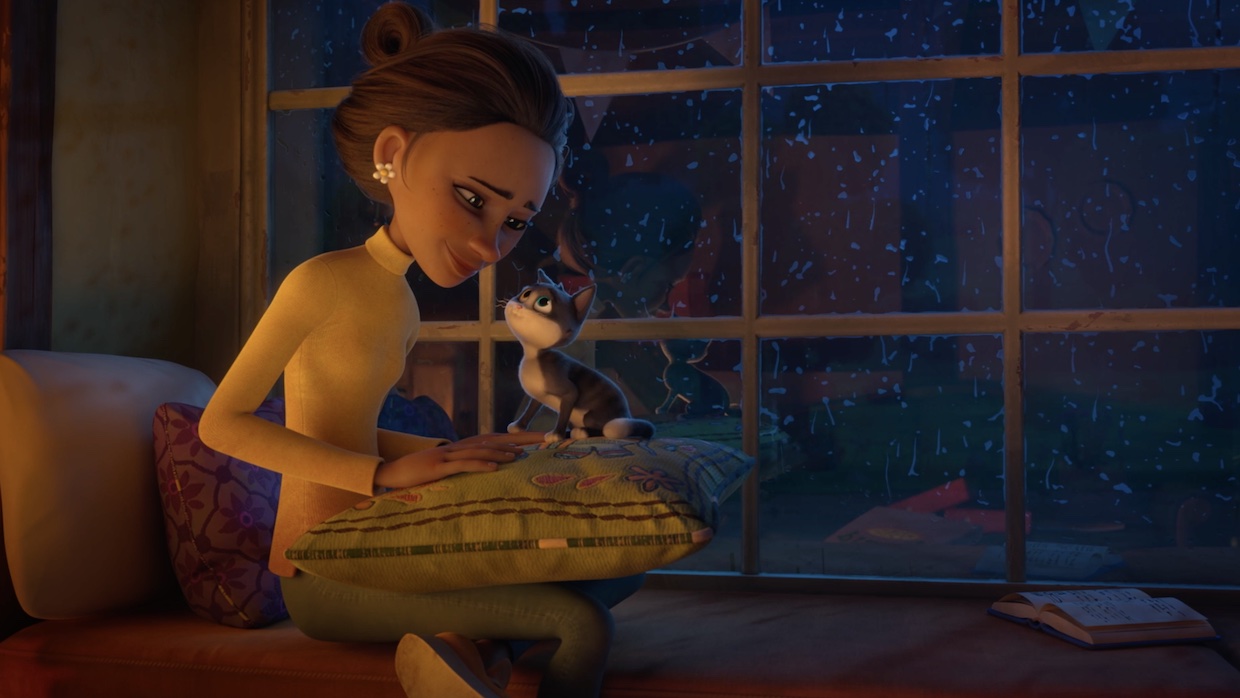 Back to selection
Back to selection
“My Imagination Was Intimately Connected to the Countryside of My Birth” | Christopher Jenkins, 10 Lives
 10 Lives, courtesy of Sundance Institute.
10 Lives, courtesy of Sundance Institute. Films are made of and from places: the locations they are filmed in, the settings they are meant to evoke, the geographies where they are imagined and worked on. What place tells its own story about your film, whether a particularly challenging location that required production ingenuity or a map reference that inspired you personally, politically or creatively?
I’m from the U.K., but have lived in the States for 30-something years. And while I’m thoroughly glued into my life in Los Angeles, I’ve yet to go completely native. Still, to this day when writing, I unconsciously lean into the values I grew up with, things that sometimes stick out as “not American enough,” or colloquially British.
During the very early stages of re-writing 10 Lives, the location of the movie shifted from California to England, and I found that for the first time in my career, I was able to truly write about what I know, without looking up locations or consulting Google for Americanisms. Consequently, what was once a fairly straightforward story of American attitudes and family necessarily became British, and my creative world opened up for 10 Lives.
As you know, Britain is very old, everyone lives in a castle, and we all have tea with royalty on a regular basis—well, maybe not. But there are many locations that are more typically English and therefore perfect for an animated movie, where being transported to another world is part of the requisite experience. Consequently, I chose to set my story in the English county of Dorset. Dorset is populated by little hamlets and villages, where the patchwork of farmland is wrapped in a weave of fields and hedgerows. The final emblem of an unmistakable Englishness are the spectacular White Cliffs that hug a very beautiful part of the southern coast of Britain, otherwise known as the English Riviera.
Choosing this inspirational location was a first step, but since everything in an animated movie has to be created from the ground up, the initial task would be to draw up a fictional map and sketch locations that production could handle within our relatively small budget. Based on my script, there would be three main sets connected by a country road: a secluded cottage on the coast, a university town with an old-fashioned pier and a small hamlet that included a pet shelter, a church and the obligatory pub.
I amassed a huge collection of reference photos to make sure that the fictional world held all the Dorset characteristics I needed, and at the same time found that in my initial sketches, my imagination was intimately connected to the countryside of my birth. It all came naturally, though not necessarily to my fantastic Canadian crew. Why should it? So as my rough drawings were turned into glorious 3D worlds by far more brilliant minds than my own, I would make sure that everything down to the smallest details were truly accurate. I know I missed a few things (like the London Transport sign that somehow snuck into a country lane), but overall I’m really pleased with the visceral sense of Britishness the movie evokes.
Unlike so many animated movies at the bigger studios, we didn’t have the bandwidth to search for stylization, but I think the 10 Lives story almost automatically brought a characterization and a believability that was both beautiful, functional and somewhat storybook-like. The epicenter of the story, Rose Cottage, was the starting place for on-production look development, and called for clarity and unparalleled time-management. This main location needed to be a charming home for Rose Shukla and her newly adopted cat, Beckett. It had to be a world apart where a cozy front room featured a big fireplace and a large window seat, a laboratory off the small kitchen for Rose’s experiments with honey bees, and patio doors that opened onto a lush garden that any cat would die for—about 9 times. To cap it off, a cozy bedroom in the eaves featured various items that spoke to Rose’s Indian heritage.
With this in mind, I treated the cottage like the stage of a TV show, imagining and pre-planning the action with orthographic drawings before the story artists came aboard—I wanted their future talents focused on creating action and comedy. With the sometimes discovery of logistical issues, I adjusted the script as necessary, always thinking ahead to limit the record scratches of continuity and often finding that a new joke or story point emerged out of the solution to a problem.
This same approach of pre-planning the sets was applied to all the locations in the movie. As with live action, the sets on my movie had real world walls and boundaries, the result being that within this poetic containment there was very little time wasted in the making of 10 Lives. It was a visual contract that married whatever the story artists came up with to the computer sets as they were being built.
10 Lives was accidentally and nearly a perfect production jigsaw puzzle, and though it was a necessity to design this low-budget animation with greater care than most others, it is a process that I will use on all my movies in the future. It does not limit invention, rather it adopts the functionality of a live action process or the walls of a theater, to ground and focus the eyes of the audience onto one’s creative world.
See all responses to our annual Sundance Question here.
